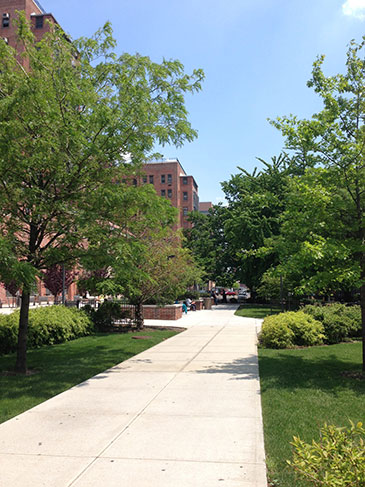NYC Health + Hospitals / Kings County

Kings County Hospital is the core hospital site for residents to train in adult and pediatric medical dermatology. Resident clinics are held four days per week at our county hospital. Pediatric clinics are open two half days per week, with trainees spending the remainder of time in the adult ambulatory clinics. Trainees are able to see a tremendous amount of skin pathology and work closely with attendings to devise complex medical and surgical treatment plans.
First year residents are responsible for administering narrow-band ultraviolet B phototherapy to patients, for skin conditions such as psoriasis, mycosis fungoides, vitiligo, and atopic dermatitis. Second year residents independently perform surgeries under attending supervision once weekly. Surgical procedures may include earlobe repair, keloid excision, complex nail procedures, cyst/lipoma removal, and skin cancer excisions. Third year residents run the busy consultation service, under a supervising attending. Residents work as a three-person team to manage the consultation services at KCH and SUNY Downstate.

- Adult outpatient clinic
- Pediatric outpatient clinic
- Phototherapy clinic
- Surgery clinic
- Adult and pediatric inpatient, emergency department, and critical care consults
Conditions often treated at KCH include: psoriasis, connective tissue diseases, sarcoidosis, mycosis fungoides/cutaneous T-cell lymphoma, hemangiomas, vitiligo, keloids, alopecia, HIV-associated dermatoses, blistering diseases (bullous pemphigoid, pemphigus vulgaris), morbilliform drug eruptions, bacterial/fungal/viral infections, atopic dermatitis, seborrheic dermatitis, acne, eczema herpeticum, pyoderma gangrenosum, vasculitides, hidradenitis suppurativa, syphilis, acne vulgaris, rosacea, pseudofolliculitis barbae, melasma, hand dermatitis, epidermal nevi, dermatofibromas.
Rare conditions also treated at KCH include: Hansen's disease, dermatofibrosarcoma protuberans, levamisole-induced vasculitis, sweets syndrome, exogenous ochronosis, neonatal lupus, linear IgA, disseminated gonococcemia, calciphylaxis, PHACE syndrome, medium vessel vasculitis, erythrodermic psoriasis, pyoderma gangrenosum, acne, and suppurative hidradenitis, syphilis, lamellar ichthyosis, DRESS, TEN, infantile myofibromatosis, nevus sebaceous with syringocystadenoma papilliferum, trichoepitheliomas, lichen striatus, acute hemorrhagic edema of infancy, lichen planus pigmentosus, progressive macular hypomelanosis, keratolysis exfoliativa, chemotherapy induced nail changes, juvenile dermatomyositis, Hailey-Hailey disease, tuberous sclerosus, dermatitis herpetiformis, ulcerative sarcoidosis, staph scalded skin syndrome, Rothmund Thompson syndrome